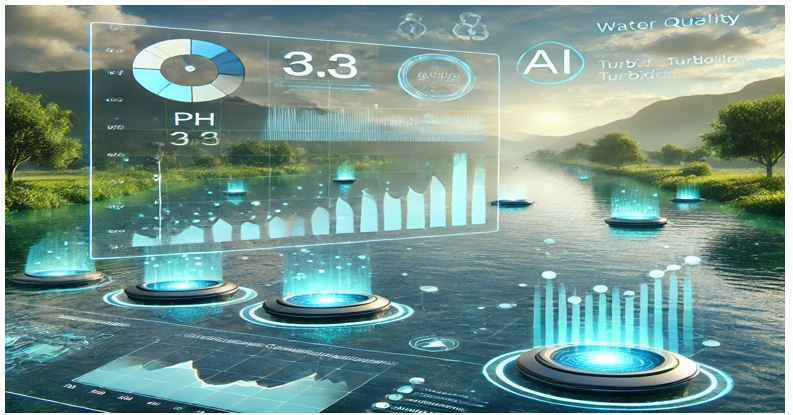Introduction: A National Environmental Crisis
In the past decade, illegal mining, locally known as galamsey, has become one of Ghana's most pressing environmental issues. The reckless extraction of minerals, especially gold, has devastated the country’s natural resources, turning once-pristine forests, rivers, and farmlands into wastelands. Galamsey’s impact extends beyond local ecosystems, undermining several of the United Nations' Sustainable Development Goals (SDGs), including SDG 15 (Life on Land), SDG 3 (Good Health and Well-being), SDG 14 (Life Below Water), and SDG 12 (Responsible Consumption and Production).

Despite Ghana's existing regulatory framework—anchored by the Minerals and Mining Act (2006) and the Environmental Protection Agency Act (1994)—galamsey continues to thrive.
Weak enforcement, corruption, and the lure of quick profits have made it difficult to combat illegal mining with legislation alone. This crisis demands a more innovative and holistic approach: one that combines advanced technology, such as Artificial Intelligence (AI), with decisive leadership.
Environmental Impact of Galamsey in Ghana
- Water Pollution and Contamination
Ghana’s rivers, once vital sources of drinking water, food, and irrigation, have become toxic due to galamsey operations.

Figure 1: Original, Tranquil, Natural River in the Heart of Nature
Rivers like the Pra, Ankobra, and Birim, which were once vibrant ecosystems, are now contaminated with mercury, cyanide, and heavy silt.
The turbidity levels of these rivers—once clear and life-giving—have soared to dangerous levels, with turbidity reaching as high as 14,000 NTU, far above the safe drinking water threshold of 50 NTU.

The presence of mercury is particularly alarming. In some rivers, mercury concentrations now exceed World Health Organization (WHO) limits by six times, wiping out aquatic life, poisoning farmlands, and putting human health at severe risk.
Communities dependent on these rivers for drinking water, fishing, and farming are now exposed to long-term health hazards, including mercury poisoning, which can cause neurological damage.
- Deforestation and Loss of Biodiversity
Ghana’s once-vibrant forests are being ravaged by illegal mining.

Approximately 315,000 hectares of forest are lost each year, stripping the land of vital ecosystems that support wildlife, regulate the climate, and protect soil integrity.
Forests like Atewa, once home to diverse wildlife including endangered species like the African grey parrot, have been turned into barren landscapes.

Beyond the loss of trees, deforestation disrupts the intricate web of biodiversity. As habitats are destroyed, species are displaced or face extinction. Soil erosion rates have skyrocketed by 50% in deforested areas, and rivers clogged with mining silt further contribute to ecological collapse.
- Soil Degradation and Agricultural Productivity Loss
Illegal mining’s impact extends far beyond rivers and forests—it is also devastating Ghana’s agricultural sector. The use of toxic chemicals like mercury and cyanide in galamsey operations has led to the contamination of over 200,000 hectares of farmland, particularly in the Ashanti, Eastern, and Western regions. This soil contamination has resulted in a sharp decline in soil fertility, making it difficult for farmers to grow crops.
Cocoa farming, a critical sector of Ghana’s economy that employs over 800,000 farmers and contributes more than $2 billion annually, has been particularly hard hit. In regions affected by illegal mining, cocoa yields have plummeted by up to 40%, with some areas producing less than 300 kilograms of cocoa per hectare, compared to the 1,000 kilograms previously produced.
The impact of galamsey on food crops is equally severe. Maize yields have decreased by 60%, while cassava production has fallen by 45% in mining-affected areas. As farmers abandon their land, rural communities experience economic decline, leading to increased poverty, rural-urban migration, and social instability. The broader consequence is a serious threat to Ghana’s food security and agricultural sustainability.
- Health Hazards for Local Communities
The social and health impacts of galamsey on local communities are profound and devastating. Many towns, such as Denkyira, Odumase, Tarkwa, Obuasi, and Prestea, have experienced severe environmental degradation, with ground subsidence causing homes to collapse and displacing hundreds of families. Illegal mining has also led to a surge in crime, with local communities reporting a 40% increase in theft, violence, and social instability.
The health risks posed by illegal mining are particularly alarming. Mercury and cyanide, commonly used in the extraction process, seep into rivers and soils, contaminating drinking water and agricultural produce. A 2023 study by the University of Ghana revealed that 35% of food samples from mining areas contained unsafe levels of mercury, which is linked to serious health issues such as kidney damage and neurological disorders.
In addition to poisoning water and food, galamsey activities have led to tragic accidents. In Denkyira, two pregnant women lost their lives when a mining pit collapsed. In another heart-wrenching incident, a woman in Odumase died when her house collapsed into a galamsey pit. These incidents underscore the dangerous living conditions faced by communities affected by illegal mining.

Harnessing AI Technologies to Combat Galamsey
Artificial Intelligence (AI) offers transformative potential in the fight against illegal mining in Ghana. Traditional methods, such as military interventions and manual inspections, have proven ineffective and reactive, often missing the full scope of the problem. AI, however, can proactively monitor, detect, and prevent illegal mining activities in real-time, making it a powerful tool in combating Galamsey.
- AI-Driven Satellite Imagery and Remote Sensing
Satellite imagery, enhanced by AI, provides real-time, bird’s-eye surveillance of remote areas where Galamsey thrives. High-resolution satellite images are analyzed by machine learning algorithms to detect unauthorized excavations, deforestation, and land-use changes that are invisible to the naked eye. AI models can predict potential illegal mining sites based on historical data, environmental patterns, and even socioeconomic factors, allowing authorities to act before damage escalates.

- AI-Powered Drones
AI-powered drones, equipped with high-definition cameras and thermal imaging, can monitor illegal mining activities in hard-to-reach, dense forest areas. These drones fly over active galamsey sites, providing real-time footage and enabling authorities to track illegal operations even at night.
The drones' thermal sensors can detect machinery and human activity, making it difficult for miners to operate covertly.

Predictive Analytics and Water Quality Monitoring
- Predictive Analytics to Identify Hotspots
AI’s ability to analyze vast datasets enables predictive models that can assess the risk of illegal mining across different regions. By evaluating historical mining patterns, socioeconomic data, weather conditions, and proximity to water bodies, AI can pinpoint areas where galamsey is likely to occur.
This data-driven approach allows authorities to allocate resources efficiently, focusing their efforts on high-risk zones before mining operations begin.

Predictive analytics also help to identify the underlying drivers of illegal mining, such as unemployment and poverty, which can inform policy interventions. By addressing these root causes, the government can offer alternative livelihoods to deter illegal mining and mitigate its environmental impact.
- Water Quality Monitoring with AI Sensors
Galamsey has left a devastating legacy of polluted rivers and contaminated water bodies. AI-enhanced water quality monitoring systems provide a critical solution. These systems use sensors placed near mining sites to detect dangerous pollutants like mercury, cyanide, and heavy metals in real-time. AI algorithms analyze this data, identifying contamination spikes and alerting environmental agencies when water quality reaches unsafe

By enabling continuous monitoring, these AI-powered sensors allow for rapid responses to pollution incidents, protecting local communities and water ecosystems. Furthermore, they guide water restoration efforts by tracking progress and ensuring the long-term protection of Ghana’s water resources.
Community Engagement and Implementation Challenges
- Community Engagement and Reporting Tools
AI technologies are not just about high-tech solutions; they also empower local communities to participate in the fight against Galamsey. AI-driven mobile apps and platforms allow citizens to anonymously report illegal mining activities by uploading photos, videos, and real-time data. These reports are processed by AI algorithms, which analyze the information to identify new hotspots and provide actionable intelligence to enforcement agencies.
In addition, AI chatbots are being deployed to educate the public about the environmental and health risks associated with illegal mining. These chatbots also guide individuals on how to report activities safely, thus promoting environmental stewardship from the grassroots level. By involving the local population, the fight against Galamsey becomes a collective mission, increasing the chances of success.
- Implementation Challenges
While the potential of AI in combating illegal mining is immense, several challenges stand in the way of its effective implementation:
High Costs: AI technologies, including drones, satellite imagery, and water quality sensors, require substantial financial investment. Maintaining these technologies also demands skilled personnel and ongoing resources, making scalability a challenge, especially in a developing country like Ghana.
Data Availability and Quality: AI systems rely on high-quality, up-to-date data. However, in Ghana, data on illegal mining and environmental conditions is often incomplete or inconsistent, reducing the accuracy of AI models and limiting their effectiveness.
Technical Expertise: The lack of local expertise in AI and machine learning poses a significant challenge. Most AI systems require specialized skills for development, operation, and maintenance, which are currently in short supply.
Community Resistance: Many rural communities depend on galamsey for their livelihoods, creating resistance to efforts that aim to shut down illegal mining operations. Building trust and providing alternative livelihood programs will be crucial in gaining community support.
AI Applications in Illegal Mining in Selected Economies
AI technologies are already being applied in other parts of the world to combat illegal mining and environmental degradation. These real-world examples provide valuable insights into how Ghana can leverage AI to address its galamsey crisis.
- Peru’s Project Earth AI
Peru faces severe environmental challenges due to illegal mining in the Amazon rainforest, with over 43,000 hectares contaminated by mercury. AI-powered satellite imagery and machine learning models are used to detect illegal mining activities by analyzing land disturbances and changes in water quality. This technology has an 85% accuracy rate and has contributed to a 25% reduction in illegal mining in heavily affected areas.
- Brazil’s AI-Powered Deforestation Monitoring
Brazil has been using Google’s AI-powered Earth Engine to monitor deforestation caused by illegal mining in the Amazon rainforest. The AI system processes satellite data with 90% accuracy, providing real-time alerts to local authorities. This initiative has led to a 20% reduction in deforestation in monitored areas, preserving critical portions of the Amazon.
- Indonesia’s Integrated Satellite Monitoring
Indonesia employs AI-driven satellite monitoring to detect illegal mining activities, particularly in regions where coral reefs and forests are under threat. The AI system has reduced the spread of illegal mining by 30% in critical areas, helping to protect the environment and local ecosystems.
- Democratic Republic of Congo’s Impact Observatory
The DRC faces major environmental and social issues due to illegal mining. AI is used to analyze satellite data with an 88% accuracy rate, distinguishing between legal and illegal operations. This initiative has contributed to a 22% reduction in illegal mining, improving conditions for local communities and ecosystems. These case studies demonstrate that AI is a powerful tool in tackling illegal mining in emerging economies, offering lessons that Ghana can apply to its fight against Galamsey.
Conclusion and Recommendations
Ghana’s battle against Galamsey demands more than just regulation and enforcement—it requires innovative technological solutions coupled with strong leadership. The environmental, economic, and social impacts of illegal mining have left deep scars on the nation, from polluted rivers and deforested lands to diminished agricultural productivity and public health crises. Traditional methods of dealing with illegal mining have proven insufficient, reactive, and often slow.
Artificial Intelligence offers Ghana a transformative opportunity. Through AI-powered satellite imagery, predictive analytics, drones, and water quality monitoring systems, the country can detect, prevent, and manage illegal mining activities more efficiently. These technologies provide the ability to monitor remote areas in real-time, predict high-risk zones, and intervene before irreversible damage occurs.
However, the successful deployment of AI technologies hinges on several key factors:
- Strong Leadership and Political Will: The government must commit to leveraging AI and ensure its effective deployment. Leadership willpower is crucial for scaling up these technologies and integrating them into national policies.
- Investment in AI Infrastructure: Ghana needs to invest in AI technologies, skilled personnel, and data collection systems to support the continuous operation and sustainability of AI initiatives.
- Community Engagement: Building trust with local communities through education and alternative livelihood programs will be essential to reduce resistance and ensure a collaborative effort to combat Galamsey.
With decisive leadership and strategic investment in AI technologies, Ghana can turn the tide against Galamsey, protecting its natural resources for future generations and positioning itself as a global leader in sustainable development.
-
The author, Jacob Naabong Dapilah, PhD is a
Lecturer & CEO of Salma AI-Training & EcoSolutions in Takoradi.
Latest Stories
-
WAFCON 2024: Nigeria begin title bid with routine win over Tunisia
8 minutes -
Ghana to host the 64th ACI World Congress in June 2026
20 minutes -
Buipewura Abdulai Jinapor II named the Development-oriented Chief of the Year Award
20 minutes -
Government to spend $1.4bn in 2025 in servicing debt to Eurobond holders
26 minutes -
Princess Duncan receives honorary doctorate from Prowess University, USA
27 minutes -
MiDA to drive Grow24 with proven MCC models
40 minutes -
Airport Bypass Chaos: Commuters, residents decry deepening gridlock crisis
43 minutes -
Police arrest suspect in Gomoa Buduatta Junction robbery
2 hours -
President’s Cup 2025: Kotoko claim victory over Hearts after coming from a goal down
2 hours -
Ahanta West MP, Mavis Kuukua Bissue, brings Ahanta language to the classroom
3 hours -
Hamas security officer says group has lost control over most of Gaza
4 hours -
TEWU-TUC denounces splinter union’s strike as ‘unlawful and destructive’
4 hours -
Rising phenomenon of academic title ‘fraud’; vice chancellors back GTEC to purge system of all ‘unearned’ titles in PhD
6 hours -
Kudus keen on Tottenham move despite first bid rejected
6 hours -
How our lack of enlightenment costs us more than corruption
6 hours

